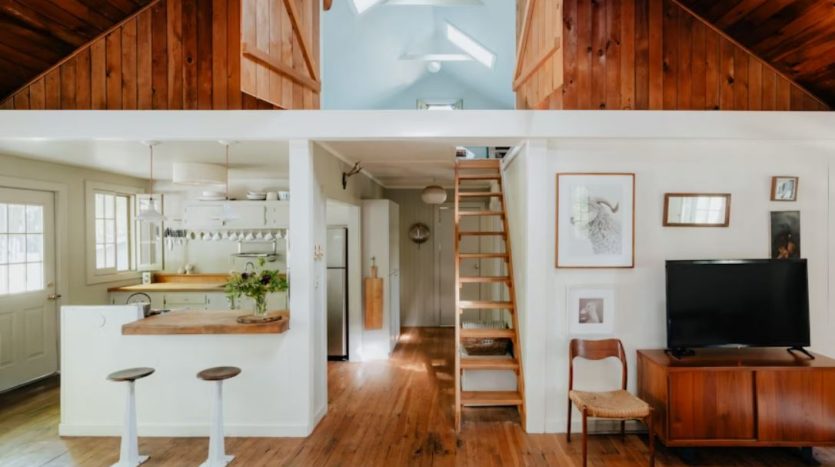Level Up: Multi-Storey House Designs for the Modern Filipino Family
If there’s one thing Filipinos are great at, it’s keeping family close, sometimes under one roof. In a country where extended families are the norm, designing a home that meets everyone’s needs is an art and a necessity.
Keep it stylish and functional with a multi-storey house. Whether accommodating Balikbayan relatives or making room for a future family of your own, the right design can make every square foot count.
Why Multi-Storey Homes Make Sense
In the Philippines, land is invaluable in urban and semi-urban areas where prices can rival those in major international cities.
Instead of spreading out, building up is often the smarter choice. Construction experts recommend multi-storey homes for extended families. They allow for multiple living areas without compromising outdoor space.
And then there’s our climate to consider. Designing vertically also means more opportunities for natural ventilation and light. When paired with smart shading, the method can help keep interiors cooler.
Inquirer.net points out that this is particularly valuable as temperatures in the Philippines continue to rise.
Design Features That Make a Difference
Open-Plan Common Areas
Gone are the days when rooms were boxed in by walls. An open-plan layout for the living, dining, and kitchen areas creates a sense of spaciousness while encouraging interaction.
Ideal Home suggests using furniture arrangements, rugs, and lighting to subtly define each “zone” without breaking up the flow.
For Filipino families, the design works wonders during gatherings, whether it’s a Sunday lunch with the entire clan or an impromptu karaoke night.
Dedicated Floors for Privacy
One of the biggest perks of a multi-storey home is the ability to assign floors for specific functions or family members.
Imagine the ground floor for communal living, the second floor for parents and kids, and the top floor as a private retreat for grandparents or guests.
Interior Company explains that zoning spaces like this not only improves functionality but also enhances privacy. Finding the balance is sometimes hard to come by in busy households.
Incorporating a Home Elevator
If you’re thinking, “What about Lola’s knees?” This is where modern convenience steps in. Home elevators are no longer a luxury reserved for mansions.
A home elevators price list in the Philippines is easy to source online. Prices can range widely depending on the model and features. Home elevator installation requirements will probably be the bulk of your budget. Then there’s the type of elevator car and whether you want automatic sliding doors and other advanced features.
Beyond accessibility, Cibes Lift adds that an elevator adds long-term value to your property and future-proofs it for aging family members.
Sustainable Cooling Strategies
We all know how relentless Philippine summers can be. The good news? You can design your home to stay naturally cooler.
Using materials with high thermal mass, installing wide eaves, and strategically positioning windows make a colossal difference.
The Inquirer recommends incorporating cross-ventilation techniques and natural shading. On the other hand, The Conversation reports that air-con alternatives are kinder to both your wallet and the planet.
Passive cooling systems, like mechanical ventilation, utilize fans to extract heat and indoor air pollution through ducts and sweep fresh air into rooms.
Blending Tradition with Modern Living
Filipino architecture is about blending functionality with cultural identity. From the warmth of natural wood finishes or capiz shell details, these elements bring a sense of familiarity and charm to a modern build.
Events like Manila FAME showcase how local designers are redefining Filipino style. They’re mixing traditional craftsmanship with modern comfort. Imagine rattan furniture next to sleek marble countertops, or locally woven textiles in a minimalist living room.
Tips for Building Your Multi-Storey Dream Home
Plan for Flexibility
Your family’s needs will change over time. A space that’s a playroom today might need to become a home office tomorrow. Better Built Homes points out that designing for adaptability ensures your home is functional for decades.
Invest in Quality Over Quantity
More floors don’t automatically mean better living. Craftsmanship, durable materials, and energy efficiency are where it’s at. These focus areas save you from costly repairs and guarantee your home remains beautiful and structurally sound.
Don’t Skimp on the Little Things
Small, thoughtful touches make a house feel like home. A rooftop garden or a reading nook with a view comes to mind. If budget allows, splurge on features that bring daily joy. It could be a balcony off the master bedroom or a sleek home elevator that everyone ends up loving.
The Future is Vertical
Everyone envisions their forever home as something from a decor magazine or a Pinterest board. Yet, you don’t need all the bells and whistles. The heart of every home is simplicity and living with purpose.
Multi-storey homes are a reflection of how Filipino families live, love, and grow together.








